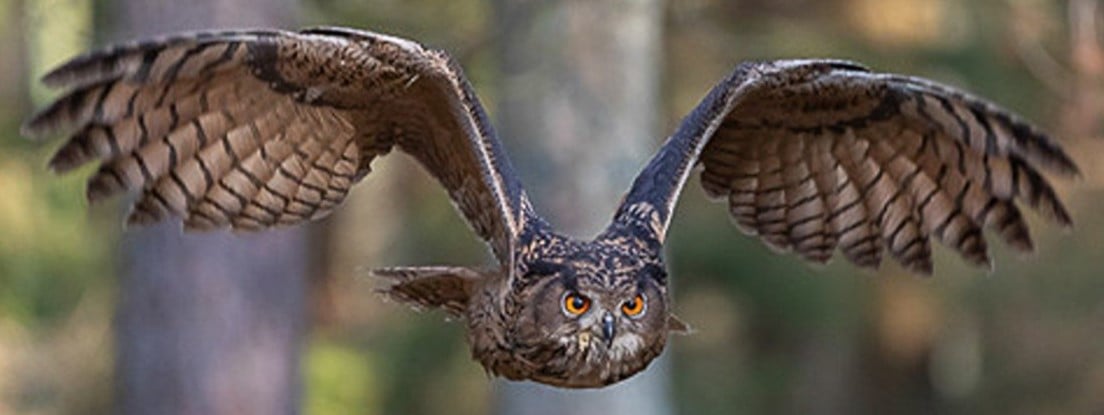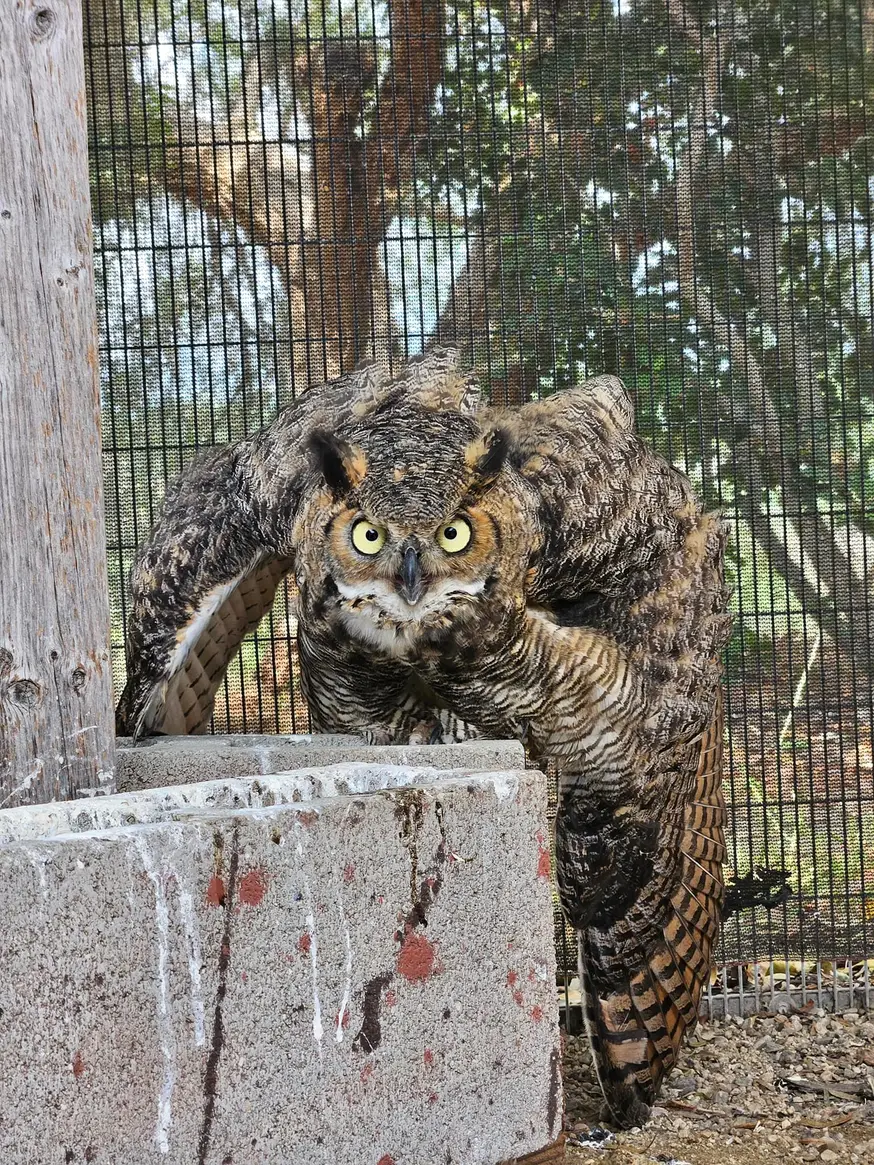Superbowl
For owls that are superb.

US Wild Animal Rescue Database: Animal Help Now
International Wildlife Rescues: RescueShelter.com
Australia Rescue Help: WIRES
Germany-Austria-Switzerland-Italy Wild Bird Rescue: wildvogelhilfe.org
If you find an injured owl:
Note your exact location so the owl can be released back where it came from. Contact a licensed wildlife rehabilitation specialist to get correct advice and immediate assistance.
Minimize stress for the owl. If you can catch it, toss a towel or sweater over it and get it in a cardboard box or pet carrier. It should have room to be comfortable but not so much it can panic and injure itself. If you can’t catch it, keep people and animals away until help can come.
Do not give food or water! If you feed them the wrong thing or give them water improperly, you can accidentally kill them. It can also cause problems if they require anesthesia once help arrives, complicating procedures and costing valuable time.
If it is a baby owl, and it looks safe and uninjured, leave it be. Time on the ground is part of their growing up. They can fly to some extent and climb trees. If animals or people are nearby, put it up on a branch so it’s safe. If it’s injured, follow the above advice.
For more detailed help, see the OwlPages Rescue page.
view the rest of the comments

Oh wow that's a lot! But I guess it makes sense since flying muscles probably are around there (please correct me if I'm wrong lol)
I will put it into context most of us will understand.
This is a chicken. Those 2 giant muscles in the middle, what we'd call the chicken breasts, are the pectorals. For us, we use them to push, as in a bench press or butterfly. For the birds, these are the flight muscles.
If you've carved a chicken or eaten chicken on the bone, you know the breast is by far the biggest piece. Part of that is selective breeding, so much so that the chickens we raise as food are too meaty to get very far with their wings anymore. Wild chickens (jungle fowl) can fly pretty decently for big birds.
Here's a jungle fowl:
You've also seen that the chicken breast is connected to that big ridge on the ribscage, that giant, long, sturdy breast bone.
That is a huge anchor point for the muscle to counteract all that force of the flapping. With our tiny pecs, we'd tear a muscle before we got anywhere close to getting off the ground. But the bird breastbone goes from the top of the ribs to the hips. If your chest muscles were the size of your whole torso and thicker than your thighs, imagine how strong you would be!
Oh wow... That's nuts! Thank you for the explanation!
Absowlutely!